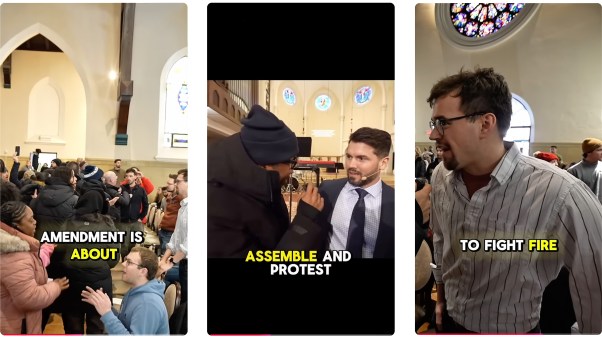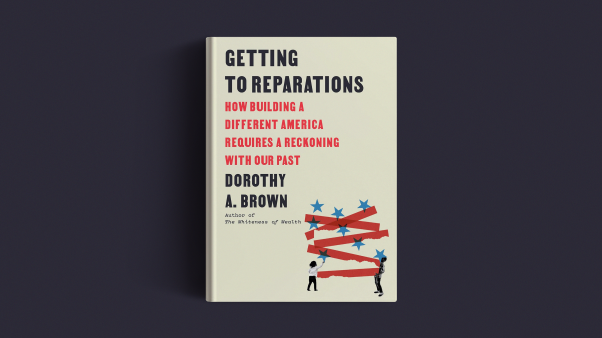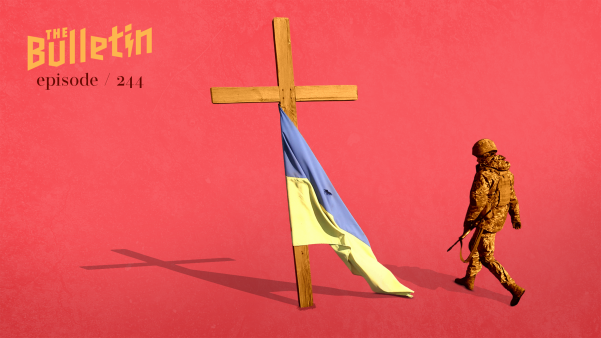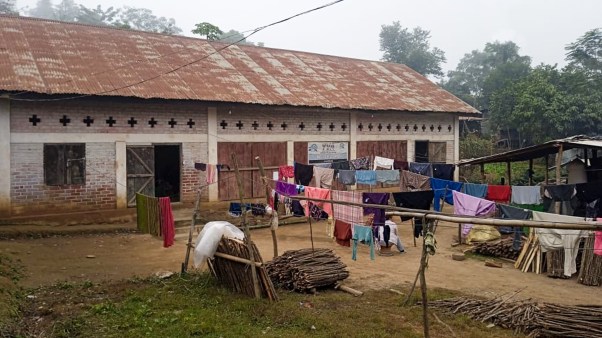Our September issue went to press before the stunningly rapid fall of Afghanistan’s government. This month’s cover honors the history of faithful, unseen service in Afghanistan on the part of local believers and Christian aid workers. With the Taliban now firmly in control, it’s easy to forget that the church was at work there long before America’s “forever war” began—and will remain at work there, now that the war has ended.
Like so many, Arley Loewen knows exactly where he was when 9/11 happened. He was in Islamabad, Pakistan, working with Afghan refugees as an educator, and he had to evacuate the area for safety.
But as a foreign aid worker, there are also other dates he thinks about, memorializing other deaths. Those who spent time on humanitarian work in Afghanistan in the past 20 years get emotional remembering the Afghan and foreign friends, coworkers, and neighbors who died.
On March 27, 2003, a Red Cross engineer was executed by unknown gunmen.
On June 2, 2004, five Médecins Sans Frontières staff were killed on the road between Khair Khana and Qala-i-Naw.
On January 14, 2008, an attack on the Serena Hotel in Kabul killed six.
On July 24, 2014, two Finnish women with an international ministry were shot and killed.
On October 3, 2015, a US airstrike hit a Médecins Sans Frontières hospital and killed 42.
On November 24, 2019, a roadside bomb killed a California man with the UN Development Program and wounded five others.
There are other dark dates, and Loewen, who currently lives in Manitoba and teaches Bible and Muslim-Christian relations at a small Christian college, regularly checks his phone to see if his friends in Afghanistan are okay.
“We tend to sit in the story of violence, and it’s so real with the Taliban taking one district after another,” Loewen said. “But then the other story of civil society—I love that story.”
According to a recent report from the US Agency for International Development, there are about 140 nongovernment charity organizations, many of them Christian, doing aid work in Afghanistan. There are also another dozen UN organizations. They are providing food, medical care, cash transfers, education, and tools and seeds for farmers. They are encouraging music, art, literature, and sports. In the midst of war and conflict, they have encouraged community and civil society.
They have, perhaps most of all, formed deep connections with the people of Afghanistan.
Transformation brought by the Afghan people
“Aid workers are just there for the people,” said Patrick Krayer, who lived and worked in Kabul with his wife and kids. “We’re just facilitating. … We’re not messiahs. We don’t want to get into the power dynamics that, ‘We’re coming in to save you.’”
Krayer pointed to ophthalmology as one example of how aid workers help. Beginning in the 1960s, a Christian aid organization helped establish an ophthalmology department at Kabul University, training Afghan eye doctors. Then those doctors trained others, and today all the ophthalmology is done by Afghans for each other.
“One hundred percent of all the eye care in the country came out of that department,” he said.
Krayer and others are quick to point out that though they have provided resources and support, the real transformations that have happened in the country have been done by the Afghans themselves.
“We’re just empowering them to do what they want to do to serve their own people,” said Krayer, who now teaches at Dallas International University.
He recalls arriving in Kabul in 2002 and seeing building after building bombed out. By 2012, the city of more than four million was completely rebuilt. There were other kinds of transformations, too. Artists started creating again. Soon, women were competing in athletics and participating in team sports, and by 2008, Afghanistan had its first Olympic medalist. There was an explosion of popular culture. Afghan Star, a singing competition show that brought in hopeful contestants from around the nation, became the most popular show on Afghan television.
Afghans did almost all of the transformational work, Krayer said. But they don’t get the credit, and the story of the violence misses so much about what has happened and what is happening in Afghanistan.
“I was a guest in their country,” he said. “They allowed me into their communities. They allowed me into their homes. They’re very hospitable and gracious. It’s an incredible privilege to be working and living among the people.”
Krayer recalls one time he got a flat tire in a small village about four hours from Kabul. He had already replaced one flat on the trip and didn’t have a spare. A stranger grabbed his tire, jumped into a passing taxi, and went and repaired it.
 Photos Courtesy of Arley Loewen
Photos Courtesy of Arley LoewenAid work will not end with withdrawal
As the US military pulls out of the country, foreign aid workers are preparing for the changing political reality in Afghanistan. President Joe Biden, the third US president to pledge complete withdrawal from what has become known as America’s “forever war,” said security for the region needed to be turned over to Afghanistan forces by the 20th anniversary of the 9/11 attacks. The president expressed confidence that the Afghan soldiers have the “capacity to sustain the government” but also acknowledged the country will deal with ongoing “internal issues.”
Observers say the Taliban is gaining power in many districts and the conflict may turn into a civil war after the US forces depart.
Christian aid workers, who have seen a rise in violence targeting humanitarian groups in the past few years, are concerned about the uncertain future. But they also say they are doing work that did not begin with the US invasion and will not end with US withdrawal. They were doing something different than the military.
“We want people to know that God loves them,” Krayer said. “And love has to be practical and physical.”
Aid provides stability in a country, and for Christian aid workers at least, it is explicitly nonpolitical. During times of transition, that can be even more important. Krayer said that in the Afghan civil war of the 1980s and ’90s, there were many aid workers who stayed in the region.
In the near future, many workers may leave because of security concerns. Others will find ways to stay, said an author and aid worker who, for safety reasons, uses the pseudonym Anna Hampton.
“There is a 100-year modern history of the Christian foreigner in Afghanistan,” Hampton said. “It’ll get small again, but it’ll be there.”
The motive, according to Hampton, is simple: “We love Jesus and we love the Afghan people.”
That doesn’t mean there won’t be dangers. In the past 20 years, aid workers have experienced a lot of risks. They and their families have had to make careful, calculated decisions about what to do and how vulnerable they are willing to be.
Hampton’s family’s home was once broken into by armed men, a close family friend was kidnapped and killed, and they were forced to evacuate the country. Hampton said she still deals with the trauma from the attack on her family. But peril is also an opportunity to live out her faith.
Hampton now writes about the theology of risk and teaches future aid workers how to discern healthy fear and develop mature courage. Many Christians have an idea of courage that looks like a lone man dying on a battlefield, she said, but that’s not a biblical picture.
“Both Jesus and Paul fled risky situations,” she said. “Workers need to see where God is speaking and guiding and leading them either to continue to move into a higher risk situation, or to retreat for a time.” In her book Facing Danger: A Guide Through Risk, Hampton talks about what it meant, as a Christian and a mother in Afghanistan, to try to show her children a picture of how Jesus would respond to people’s needs and also human danger.
Loewen said people asked him and his wife about the risks of bringing their two small daughters to the region, too. And there were risks. But also an incredible richness, raising a family in that culture and seeing his daughters learn to cross cultural lines as if it were normal.
“They treasured their lives in Pakistan and Afghanistan,” he said. “In school, our daughters could relate to Afghan boys and girls as friends.”
Of course, it’s not just aid workers and Christian foreigners who face threats. The conflict has been dangerous for many in Afghanistan, and a small but vibrant group of Afghan Christians pray and worship behind a protective veil of privacy.
According to the Pew Research Center, less than 0.3 percent of the 34 million Afghans belong to a minority religious group, whether Christian, Hindu, Sikh, or Baha’i. But accurate numbers are hard to come by. The population is predominantly Sunni Muslim, and the constitution states that Islam is the state religion. Minorities are allowed to practice their faith, but it’s not considered culturally acceptable in public spaces.
Many Afghans—some for religious reasons, more for political reasons—are currently weighing whether they should leave the country in this time of transition. According to a recent United Nations Refugee Agency report, nearly 1,000 have left per month since April. They will join the millions displaced from their homes in the past 40 years.
 Courtesy of Arley Loewen
Courtesy of Arley LoewenThe Afghans outside of Afghanistan
Currently, 42,000 Afghans live in Toronto, and thousands more in other North American cities. New York has 18,000 and Los Angeles, 12,000, according to Global Gates estimates.
Negin Ponce was one of those refugees, arriving in New York in the 1990s, where she lived for five years until moving with her parents to California. She was in high school in California when 9/11 happened. Her first concern was for an aunt who worked in the World Trade Center. Only later did she realize that, because she was a Muslim and because she was from Afghanistan, some of those around her would associate her with the perpetrators and not the victims of the violence.
“I wanted to put a blanket over my head, for people not to know where I came from,” she said. “It was caused by radical people and radical extremism, rather than the kind and patient and loving Muslims.”
Later, Ponce became a follower of Christ, after she had a vision of three crosses, found a Bible, and then visited a church. Now, because of her faith and because of her own experiences as a child, she supports Muslim refugees in California and urges her fellow Christians to reach out to their Muslim neighbors.
“It’s a very warm and loving culture that really is about the family unit,” she said. “We love our ethnic foods. And don’t you ever dare go into an Afghan woman’s home who’s a homemaker and say, ‘I’m bringing fast food.’”
Americans can care for the Afghans in their midst by listening to their stories, teaching them English, and meeting practical needs like medical care and employment assistance, said Jamie Coleman, pastor of Nexus Community Church in Dallas. The church meets in the community center of a large apartment complex filled with refugees. He estimated that about 500 families of Afghans live within a two-mile radius of the church.
The church members are forming relationships, getting to know the Afghans as people.
“To have a friend be able to listen to how they’re experiencing life here in contrast to what life is like in Afghanistan? They love to share that,” he said. “In Afghanistan, brothers and sisters and parents live together in big houses, a communal life. Here it’s extremely different, with lots of pressure to pay the bills and work, work, work.”
Afghan women who wear head coverings feel like targets are on their backs when they go out in public in America, Coleman said. Many of the women are illiterate and uneducated, can’t drive, and struggle with isolation and cultural barriers. Americans can provide safe community for them.
“We learn their stories. We drink tea with them,” he said. “It’s very organic and relational. It’s just listening well.”
Coleman brings out some saffron tea that an Afghan refugee friend in Dallas gave him. A nice gift, but more important for its potential.
“There are hundreds of conversations with Afghans in this packet of tea,” Coleman said. “I’ve offered that packet of tea to the Lord.”
According to Loewen, there is a Greek word for this. It’s philoxenos, or “loving the stranger.” That’s how Christians are supposed to treat their neighbors, and it’s also the key, he said, to foreign aid work.
The real story
It’s also how many Afghans welcomed him and other foreign aid workers: with hospitality. As Loewen checks his phone for updates from friends, in this tumultuous time, he’s also planning his next trip back.
He missed last year’s visit due to COVID-19. He doesn’t know when he will be able to go next, either, but he talks about the friends he will visit, the conversations he’ll have, the poetry he’ll enjoy, and the delicious food he will eat.
He recalls accepting an invitation to bring some visitors to an Afghan’s house in 2006. Loewen started worrying about the financial strain a big meal could have on his host.
“I said to him, ‘Please take it easy, don’t overdo it with the food,’” Loewen said. “He brushed me aside as if to say, ‘It’s none of your business’ … and then stated, ‘The stomach is yours; the guests are mine.’ In other words, you can eat as little as you want, but I’m going to enjoy the guests.”
That night they broke bread together, often eating from the same plates, sharing some of the finest meats the visitors had ever eaten, along with Afghan-style ravioli and other delicacies that Loewen, if he thinks about them, can still taste.
There were so many meals like that, had by so many Afghans and so many foreign aid workers. There will be many more, too.
And that’s the story that Christians who work with Afghans in the US and in Afghanistan want to tell—a story of hospitality and friendship.
Rebecca Hopkins is a journalist living in Colorado. She spent 14 years in Indonesia and writes about international nonprofit work.














